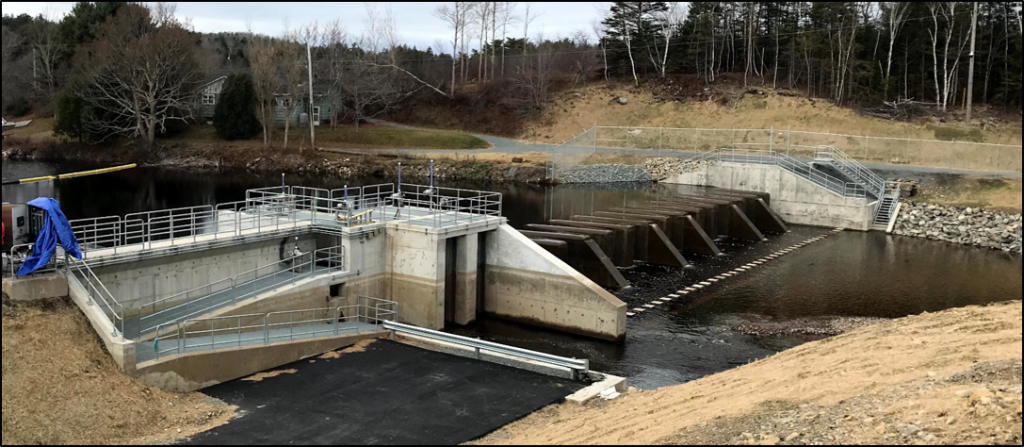Remembering Canada’s treatment of Japanese-Canadians on International Day for the Elimination of Racial Discrimination
Posted Mar 21, 2021 10:00:00 AM.
Sunday is the International Day for the Elimination of Racial Discrimination, as declared by the United Nations.
The commemoration is held each year in remembrance of victims of the March 21, 1960, Sharpeville massacre in South Africa. Sixty-nine Black people were killed and 180 were hurt when police opened fire on an anti-apartheid protest.
At home, this year marks the 75th anniversary of another example of a government turning on its own: Canada’s draconian, postwar treatment of its citizens of Japanese heritage.
In 1946, following the end of the Second World War the previous year and the internment of Japanese Canadians, close to 4,000 members of this country’s Japanese community were deported to war-torn Japan.
It was a race-based policy Ottawa carried out during peacetime, and it would be years before deportees were allowed to return to Canada.
Among the exiled were about 2,000 Canadian-born children, according to Library and Archives Canada. Of those shipped out to Japan, 66 per cent were Canadians by birth or naturalization.
Linda Kawamoto Reid, of the Nikkei National Museum and Cultural Centre in Burnaby, B.C., said the deportation was unconstitutional.
“The government called it ‘repatriation’ but those children had never set foot in Japan before,” she told HalifaxToday.ca last month via email.
“It was technically ‘deportation’ of innocent, Canadian-born children for the sole reason of economic jealousy of their immigrant parents, who worked so hard to get an equal foothold in Canada but could not.”
Kawamoto Reid, the Nikkei museum’s research archivist and chair of the Japanese Canadian War Memorial Committee that puts on annual Remembrance Day services at a cenotaph in Vancouver’s Stanley Park, said her second cousins were exiled to Japan.
The deported family included six children; all but one relative eventually returned to Canada.
“The deportees represented about one-fifth of some 20,000 Japanese Canadians who were forcibly removed from the West Coast,” says a blog post by R.L. Gabrielle Nishiguchi, published online in 2018 by Library and Archives Canada.
People who were deported, on ships sailing from Vancouver, struggled and suffered “in a defeated and starving Japan and . . . were effectively barred from returning to Canada (at that time) solely on the basis of their racial origin,” it says. The vessels were American, chartered by the Canadian government.
* * * *
Historian John Price, professor emeritus at the University of Victoria, said in an article published in 2019 in the Victoria Times Colonist, that “even as the tides of war turned” in favour of the Allies, bigoted members of British Columbia’s legislature wanted to keep Japanese Canadians out of the province.
“B.C. deputy premier and attorney general R.L. Maitland, president of the Canadian Bar Association and a key figure in the early campaign to uproot, remained resolute. Stopping Japanese Canadians from returning to the province was essential,” he wrote. Maitland said this in late 1944, according to Price.
With the Second World War in the history books, politics were of prime importance.
“In 1948, the new (B.C.) premier, Byron Johnson, advised the federal government not to allow Japanese Canadians to return to the coast,” Price said in his Times Colonist piece, “otherwise the (governing) Liberals might lose a byelection. As a result, the prohibition on returning to the coast continued, to be lifted only in 1949.”
* * * *
The roundup and expulsion of Japanese Canadians from British Columbia began in 1942, about 12 weeks after Japan attacked Pearl Harbor in Hawaii, and also Hong Kong, in December 1941.
“The federal government, at the instigation of racist B.C. politicians, used the War Measures Act to order the removal of all Japanese Canadians residing within 100 miles of the Pacific coast,” The Canadian Encyclopedia says.
David Suzuki, the Canadian environmentalist, geneticist, author and longtime broadcaster, was born in Vancouver in 1936 to Canadian-born parents. He has said when his family was sent to an internment camp in the B.C. Interior after the attacks by Japan, his parents shielded him from the stark realities of their new lot in life.
“They were still in their early 30s at the time, with three young children. It must have been a very turbulent time, emotionally, being ripped out of their homes and losing the business they had – they had a little dry cleaner business – and being basically declared enemy aliens (and) having all of their assets frozen and our possessions confiscated,” Suzuki, who turns 85 years old on March 24, said in a reminiscence posted online by Library and Archives Canada.
He said “Canada failed to live up to its democratic ideals,” in regard to what happened to Japanese Canadians cast aside in the 1940s.
Kawamoto Reid said the federal government – the prime minister then was Liberal William Lyon Mackenzie King – was to blame for this ignoble chapter in Canadian history, but it had help.
“The B.C. government was complicit in that many racist politicians won seats based on those exclusionary policies,” she said.
A commentary in The Globe And Mail in 2016 prepared by three contributors, including a Canadian law professor who’s a legal historian, said Japanese Americans interned in the United States didn’t lose their homes, businesses and personal belongings. Many were able to “return to their lives at the end of the war.”
This was not the case in Canada, “where the hard work of generations of Japanese Canadian families and communities was obliterated by the state,” the writers’ opinion piece said.
* * * *
With respect to exile, Nishiguchi’s blog post says those Japanese Canadians – “the most vulnerable internees” – who signed up for postwar sailings to Japan weren’t provided proper information about the federal government’s deportation program.
Also, “Internment camp supervisors were graded on how many signed (deportee) forms they could obtain,” it says. The more they signed up, the better it looked for those detention officials.
The National Association of Japanese Canadians’ website says the internment of Japanese community members in B.C. during the war was followed by this coercion-involved edict after the fighting stopped: “Move east of the Rocky Mountains or be exiled to Japan.”
It was an “intimidation campaign,” the association’s website says; these were the only options available. Signees who opted to go to Japan were considered “disloyal.”
Deportation took place between May and December 1946. Years later, Ottawa revoked an order barring so-called “enemy aliens” from moving here and allowed “some of those deported to re-immigrate to Canada,” the association’s website says.
About one-quarter of the deportees returned to Canada. A 1992 National Film Board production of a short, mostly-animated documentary tells the story of one family’s exile experience:
* * * *
Nishiguchi, in her Library and Archives Canada piece, shows the federal government years after 1946 still pushed its lingering anti-Japanese bigotry through the corridors of power. An internal note from a deputy minister – a senior civil servant – to his cabinet minister said the following.
“The External Affairs Department seem inclined to agree that men who were born in Canada and who . . . were sent to Japan might now be allowed to come back,” it says. “This seems to me a matter on which there should be masterly inactivity.”
In a 1995 episode of The Fifth Estate, CBC’s long-running news magazine television show, the official policy used to exile people of Japanese descent in 1946, (and uproot and detain them during the war), was described as “ethnic cleansing.”
The TV program includes a 1943 memo to the prime minister from a federal government bureaucrat with recommendations “for reducing the Japanese Canadian population. These proposals will later become the basis for a deportation policy,” the CBC’s show said.
The surrender of Japan was announced on Aug. 15, 1945, several days after the Allies dropped atomic bombs on Hiroshima and Nagasaki. (Tokyo had been firebombed by American warplanes in March of that year.)
“With the end of war we should all have been excited that we could pack up and go home” to the West Coast, former Japanese Canadian internee, George Doi, wrote in 2017 in a story published in the Nelson (B.C.) Star.
“Well, that is not what our government had planned for us.”
Once in vanquished Japan, life for deportees from Canada was mostly a distressing scramble for survival.
The late Hanaye (Bunny) Nagamori, who was born in 1925 in Pitt Meadows, B.C., told The Fifth Estate that Japanese survivors of the war were in dire straits. What she and other deportees saw in postwar Japan were “a lot of injured people . . . unwashed bodies, people picking up whatever they could from the ground.”
Nagamori returned home to Canada. She died in St. Boniface, Man., in 2009.
* * * *
The National Association of Japanese Canadians says the first Japanese person known to travel to Canada (landing in New Westminster, B.C.), and settle here, arrived 144 years ago. By 1901, about 5,000 Japanese immigrants were living in the country, its website says. Regarding internment and expulsion in the 1940s, the association says postwar restrictions inside Canada were finally removed in March 1949. Community members gained “full rights of citizenship” and were “free to move anywhere in Canada.”
In 1988, then-Prime Minister Brian Mulroney announced a $300-million compensation settlement with the association, headquartered in Winnipeg, which had negotiated with the federal government on behalf of Japanese Canadians and their families who’d survived the injustices thrust upon them decades earlier.
Mulroney also delivered a formal apology.
For many Japanese Canadians, the truth and effects of wartime and postwar mistreatment and displacement by their government weren’t discussed.
“The children and grandchildren of former internees often found that their relatives never spoke of the 1940s, and that the unspoken shame of internment was a dark cloud over the household,” The National Post reported in 2016.
Kawamoto Reid said the Issei, or first generation of immigrants from Japan, “practiced a Japanese trait that was wrapped up in the saying ‘Shigata ga nai’ (nothing can be done to change the past, so let’s get on with it), and did everything they could to make life better for the sake of the children.”
She added “the reasons for not speaking about (the war years in Canada and postwar exile) were much more complex – systemic racism, ethnic cleansing, assimilation, being chided by their own race for being traitors if they did not support Japan.”
“The list is long,” Kawamoto Reid said in February in her email.
At her workplace, the Nikkei museum in Burnaby, a current exhibit called Broken Promises “explores the dispossession of Japanese Canadians in the 1940s,” its website says. “It illuminates the loss of home and the struggle for justice of one racially marginalized community.”
Of the people expelled from Canada 75 years ago, beginning this May, older deportees are deceased now. Children and teens exiled with their parents, and who are still alive, are community elders well into their senior years.
British Columbia’s government apologized in 2012 for the province’s role in the purge of civilians of Japanese ancestry from the West Coast in the 1940s. The following year, Vancouver city council did the same.
The National Association of Japanese Canadians has been involved in talks with the B.C. government “to determine a set of legacy initiatives for the community,” regarding the group’s goal of cementing a multipronged redress agreement with the province.
More information can be found here: http://najc.ca/bcredress/
Michael Lightstone is a freelance reporter living in Dartmouth








